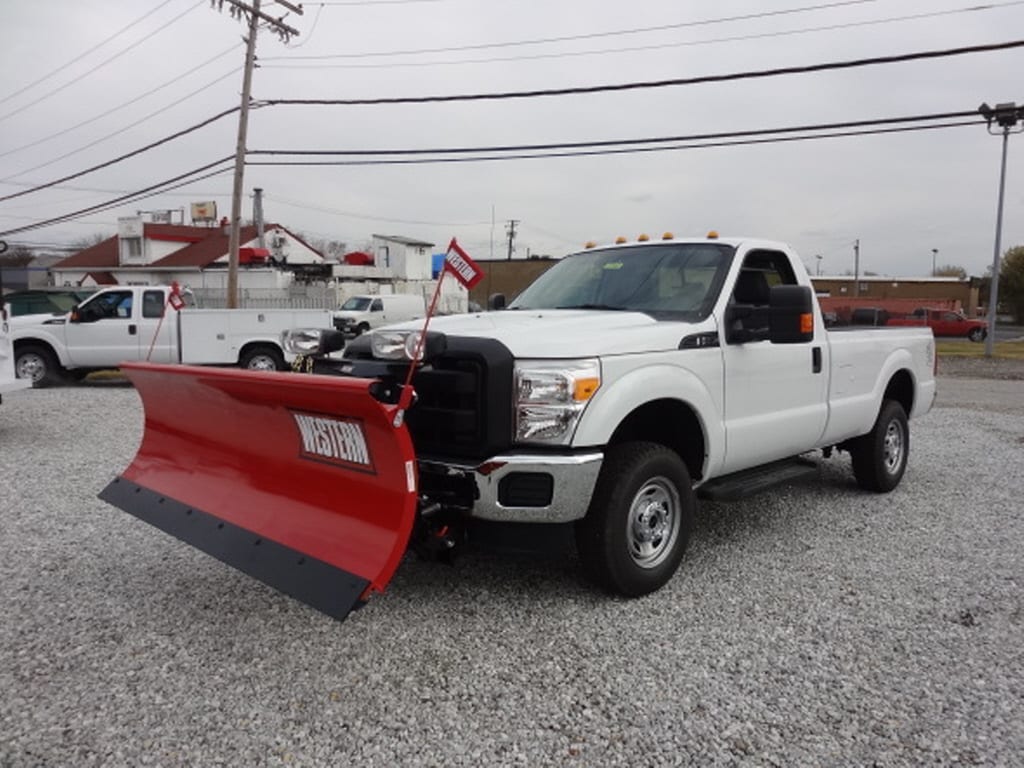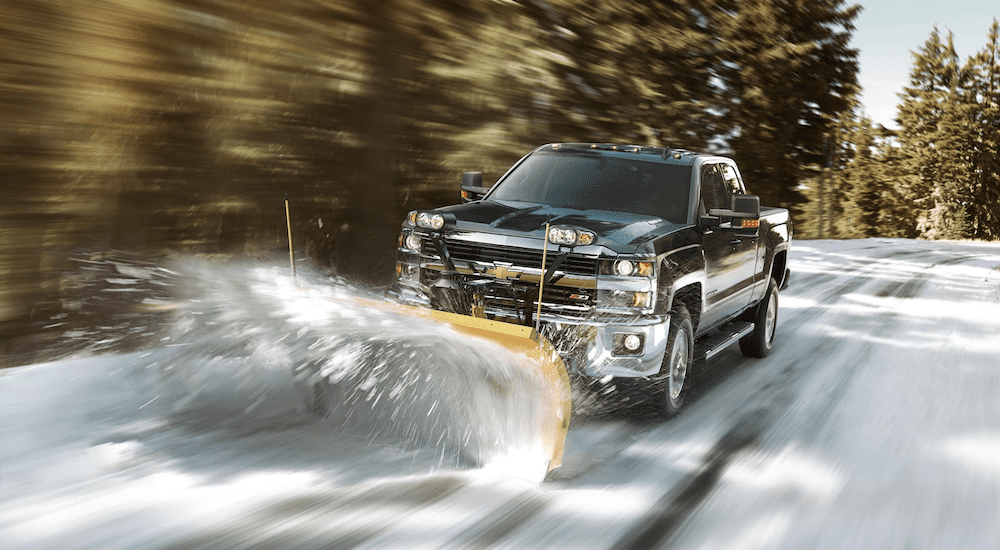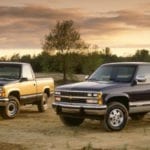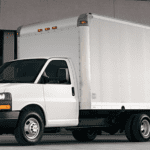What is it about a New England winter that creates its fair share of people considering snow plowing as a means of supplemental income? We’re sure it’s the same in any geography affected by winter weather, but it’s always interesting to see the barrage of truck owners – and those looking to buy a used truck – hatch a strategy to carve out their piece of the season pie. But now all plow drivers are created equal. Some know exactly what they’re doing, others…not so much.
What’s interesting is that the majority of snow removal contractors out there, regardless of geography, less than 4% count snow removal as their sole source of supplemental income. What this means is that the lion’s share of snow removal is being facilitated by larger scale contractors, as a means of replenishing lost income during the off-season.
Landscaping companies are a perfect example of such contractors. While spring, summer and autumn months provide opportunities for everything from greens-keeping and gardening to cleanup and gutter-clearing. But once the snow begins to fall, those opportunities are all but dead – and could be for up to six months. And many of the aforementioned companies are sending out multiple plow crews, in order to maximize revenue and minimize employee layoffs.
So, if you’re planning to jump into the world of snow-plowing, it’s important to understand that you could be looking to insert yourself into as little of 4% of your local opportunities, be they (most likely) residential or (possibly) commercial. In other words, don’t quit your day job. Unless of course, you are (or are employed by) an off-season contractor…then this IS your day job.
But don’t let the breakdown discourage you. Snow removal is a $19 billion a year industry, and a scalable business. So, what do you need to take into consideration before embarking on this new adventure? First off, if you’re thinking of buying used, just know what you might be getting yourself into.
The Risk of a Used Plow Truck
Now, we’re not saying that all used trucks provide unsuitable platforms to build a burgeoning plow career on. Simply put, you need to recognize the strain you’re about to put on a truck and make sure that the truck is able to sustain it.
A colleague, with some experience, had this to say on the topic of buying a used plow truck…
Don’t.
“Why? Because with your luck, you’ll get a truck from a guy like me — one that was used and abused for more than six winters. Judge me if you want, but when you start going on 17 hours with no sleep, your shit-giving nature about the mechanical quality of your truck goes right out the window.
I decimated the transmission pushing back snowbanks taller than my truck in order to keep the roads open for emergency vehicles — twice. Knocked the front driveshaft entirely out of the vehicle, cracked the windshield from a falling tree limb, and ruined at least three sets of tires. Not to mention, the undercarriage looks like swiss cheese from playing in salt and sand, even after properly cleaning it. Topping it all off, the body has more dents, dings, scrapes, scratches, and any other form of damage you can imagine.
Bottom-line, whatever you find yourself behind the wheel of, you’re about to put it to work. If you choose to buy used, make damn sure that you’ve explored every inch of that vehicle, and understand how it’s been driven. If it’s been previously used for plowing, how many seasons and what preventative maintenance and/or repairs has it received? Failure to perform due diligence could sabotage your plans before they even start. After all, who wants a plow-guy with a less-than-reliable truck?
Converting Existing Equipment
That said, not everyone is basing their aspirations on the purchase of a vehicle. Some of you might be looking to utilize your personal truck (or put a fleet of commercial trucks to use, in the off-season). And if you count yourselves among the latter, you might even have additional equipment options to choose from ie: Bobcat, or light/heavy machinery).
Bottom-line, it’s important to understand any built-in limitations of your vehicles / equipment. For example, many contractors build their fleets from light-duty work trucks, based primarily upon their affordability. Whether midsize or base-trim full-sized pickups, it’s unlikely that such vehicles are configured for the rigors of plowing.
Consider the demands of the plow alone. Whether steel or polyethylene, a plow blade can range from six-to-ten feet in width, with a weight in the hundreds-to-thousands of pounds. If looking to plow with an existing vehicle, choose the right plow. If looking to use an existing plow, choose the right truck. Common sense, right?
But a truck should also be equipped with a plow package, reinforcing the front-end with a stiffer suspension and modifying the coolant system to ensure the truck’s performance. These should be primary concerns in exploring a truck’s suitability for plowing, and might require research into aftermarket modifications.
But it’s not all performance ratings and structural details. The most common sense consideration is the need of a bulletproof transmission, with the full range of a four-wheel drivetrain. Without 4WD capability, you’re not going very far, but without a capable transmission, your truck won’t be able to sustain the rigors of plow-shifting. Because that shifting (as worded so eloquently by the aforementioned colleague) is “like a death sentence for weaker transmissions”.
Another consideration, of course, is the need for a heavy-duty alternator. A plow rig is operable thanks to an electric hydraulic pump which utilizes its own fluid, in conjunction with the power provided by your truck’s alternator. An ill-equipped or faulty alternator will cause battery drainage, reintroducing the unenviable possibility of being the plow-guy with the unreliable truck. Don’t make that mistake.

Is Your Truck the Right Truck?
Bottom-line, answering this question has little or nothing to do with the make of the truck. Setting aside the bias of truck maker loyalists, it really doesn’t matter which automaker you want to position as the best. The F-Series might be the best-selling, but the 2019 RAM HD has been stealing plenty of accolades since its unveiling. You might love the upstart credibility of the Tundra, but it’s hard to discourage enthusiasm over the iconic Silverado.
The only question that really matters: is the truck properly equipped? If you’re unsure, there are countless resources and forums curated by the plowing community. The more that you understand the capabilities and limitations of your truck as it stands, the easier you can identify any need for modification, and facilitate it accordingly.
Building Your Business
A closing thought, on the fiscal side of the conversation. The purchase, or modification of a vehicle for such a demanding application should be factored into your cost & strategy. Remember, any vehicle is a depreciating asset. Driving around and offering to plow random people’s driveways for $20 might seem like an easy cash grab, but it’s no way to build a business.
Your readiness to step into this marketplace should be fueled by more than just your equipment. Social media is a great way to get the word out, and to fill your customer base, and to gain awareness of competitive rates. Account for your costs, and built a strategy which makes your efforts profitable. Failure to do so might just leave you out in the cold…




